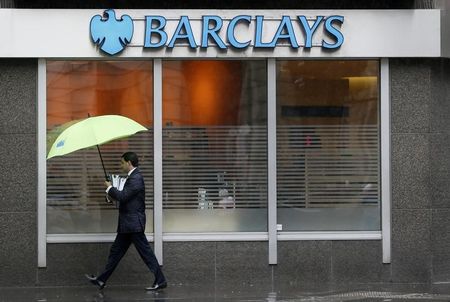Oklo stock tumbles as Financial Times scrutinizes valuation
Investing.com -- JPMorgan says the recent selloff in global banks has been driven less by macro conditions and more by risk management failures tied to non-depository financial institutions (NDFIs), warning that disclosure around these exposures remains inadequate and is now a key sector risk.
The bank also flags spillover from litigation, fines and regulatory tightening as part of the risk transmission channel.
Analysts led by Kian Abouhossein note that attention turned to NDFI exposure following credit market stress linked to First Brands, Tricolor and the selloff in U.S. regional banks after Zions and Western Alliance headlines.
While U.S. banks provide some breakdown via legal entity filings, including loans and commitments tied to private equity, Abouhossein says this still “lacks granularity and does not provide an overall picture.”
He adds that the regulatory definition of NDFIs in U.S. filings is extremely broad, covering mortgage credit intermediaries, private debt funds, hedge funds, insurance entities and securitisation vehicles, making it difficult to assess concentration risk accurately.
European banks are flagged as particularly weak on transparency. Their Pillar 3 reports only disclose total loans to “financial and insurance activities” without sector splits or visibility on off-balance sheet commitments.
Abouhossein points out that exposures may also be booked outside U.S. legal entities, citing Credit Suisse’s use of its CS International subsidiary in the U.K. as an example of how risk can be obscured.
At holding company level, U.S. banks lead in disclosed NDFI exposure with Wells Fargo at $172 billion, JPMorgan at $158 billion and Bank of America at $132 billion, the note highlights.
At subsidiary level, unused commitments are also large, with BoA at $115 billion and Wells Fargo at $122 billion.
On the other hand, European banks show limited reported exposure on U.S. filings, with HSBC at $9.5 billion and Barclays at just $0.5 billion at IHC level.
However, Abouhossein said that “we place little reliance on this data for risk assessment” given the likelihood that material exposures sit in European entities not captured in U.S. disclosures.
He says poor transparency is contributing to a valuation gap, with European wholesale and investment banks trading at 7.7 times 2027 earnings versus 12.4 times for U.S. peers.
The analyst estimates the sector’s implied cost of equity at around 11.5% but argues it should compress toward 10% and potentially 9% over time based on fundamentals.
Despite flagging disclosure risk as a structural issue, JPMorgan reiterates a preference for European banks over U.S. peers, noting that Europe trades at 8.5 times two-year forward earnings versus 10.7 times in the U.S.
It highlights Barclays , trading at 6.3 times 2027 earnings, as a re-rating candidate as returns improve and disclosure potentially normalises.
